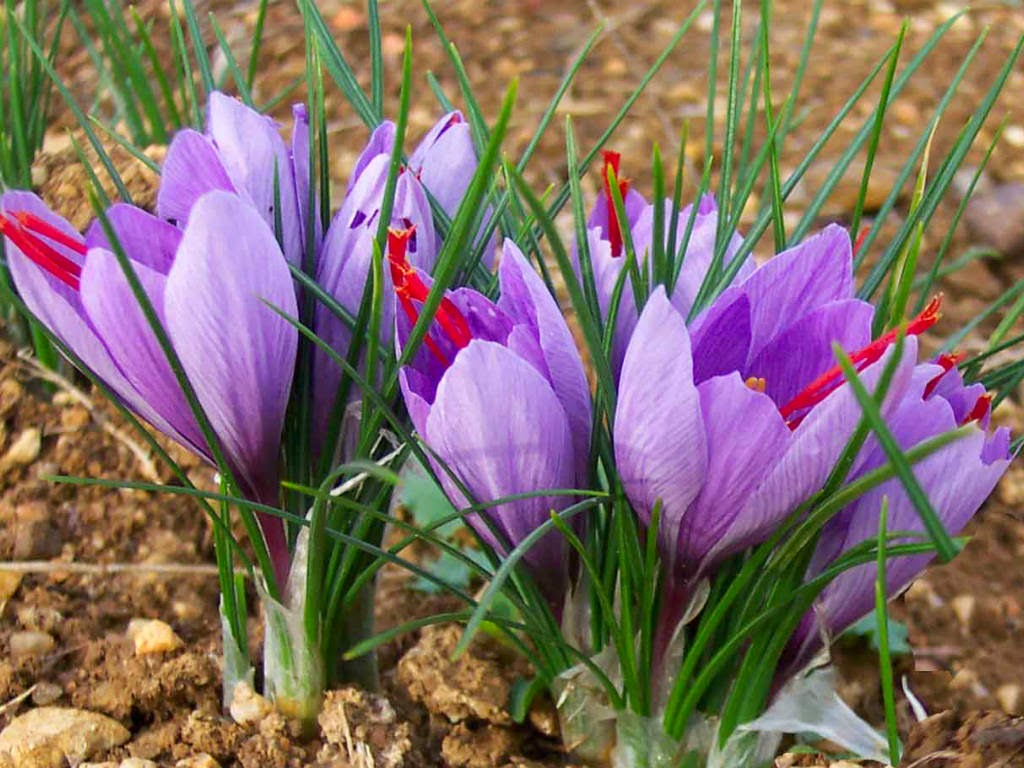The export of Iranian saffron bulb has been a hot topic of discussion in the local media for a long time, causing concern for many about the future of this valuable product.
President Hassan Rouhani’s government placed curbs on saffron bulbs exported legally and illegally between 2005 and 2013, which turned some countries, Afghanistan in particular, into a rising rival for Iranian saffron.
A member of Iran Saffron Exports Development Fund’s board of directors, Farhad Saharkhiz, recently said saffron bulb is among Iran’s “genetic resources” and there should be special supervision over its exports.
“Although curbs have been put on the export of saffron bulb under President Hassan Rouhani’s government, it seems Afghanistan does not need to import saffron bulb anymore because it has already imported enough, legally and illegally, between 2005 and 2013,” he said.
Saharkhiz notes that due to its nature, saffron bulb can be transported even when it is not cultivation season, making it really easy for smuggling.
However, Peyman Yousefi-Azar, an official with the Ministry of Agriculture, is of a different opinion.
“I’m all for the exports of saffron bulb. The restrictions and bans must be lifted and policies dating back to 50 years should be done away with,” he was quoted as saying by Mehr News Agency.
Yousefi-Azar stressed that Iran should observe global principles of doing trade and business, otherwise the country would quickly lose its position in international markets.
“Restrictive moves have not been able to halt saffron production in the world,” he argues.
In spite of strict policies set in the last decades, it is noticeable that many countries, including China, Morocco, Afghanistan, Italy, the US, France, Spain and African countries, have become saffron producers.
“As the world’s biggest saffron producer, Iran produces 95% of the world’s saffron and production in other countries has not been a hurdle for Iranian saffron,” he said.
“As the other countries turned to saffron production during the last decade, Iranian saffron exports also increased. The same should be applied for saffron bulb.”
Close to 95% of Iranian saffron are grown in the two provinces of South Khorasan and Khorasan Razavi in northeastern Iran.
According to Yousefi-Azar, unofficial figures suggest that around 80 tons of saffron bulbs are illegally imported to Afghanistan from Iran every year.
According to the official, the Netherlands presently exports saffron bulbs to Georgia, Kyrgyzstan, Turkmenistan and Russia.
Voicing concern, he thinks there will come a day when Iran’s saffron yield is 4 kilograms per hectare while the modified Dutch type’s yield would be 12 kilograms per hectare.
“Iran would quickly disappear from global markets,” he claimed.
In response to the possibility of abolishing the current ban on saffron bulb exports, he said he would do everything in his power to make this happen.
Yousefi-Azar noted that the Ministry of Agriculture plans to globalize the Iranian saffron brand and plans to open saffron offices in Hamburg, London and New York. He also encouraged those who want to enter the field of saffron by saying that the ministry would give them business loans with 6% interest rate.
The production of saffron in Afghanistan has increased in recent years. Officials are not concerned about this and believe Iran can use the situation to its advantage since with the emergence of more countries in this field, saffron consumption tends to increase.
According to Yousefi-Azar, the global saffron trade currently stands at $8.2 billion per year while Iran’s total saffron export is worth $286 million per year.
European countries, including Spain, Italy and Germany have major shares in the global trade.
“Iran’s share is only one-17th of the global trade,” he concluded.
Iran produces over 300 tons of saffron per year. Per capita consumption of saffron in the Middle Eastern country stands at 1 gram. Annually, some 80 tons of saffron are consumed domestically.
As reported by ISNA, more than 58.2 tons of saffron worth $78.58 million were exported to 50 countries during the first four months of the current fiscal year (March 21-July 22), registering a 25.3% and 22.9% growth in weight and value respectively compared with the corresponding period of last year.
Spain, Australia, South Africa, Germany, the UAE, Italy, Bahrain, the UK, the US, Belgium, Bangladesh, Pakistan, Taiwan, Turkey, the Czech Republic, South Korea and China were among the main export destinations of Iranian saffron over the period.


